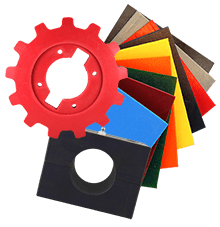Industrial plastics are pricey. But the cost is much more if you select an inferior material that is not optimal for your application. The results could be anything from wasting power, to increased maintenance, to having a part that needs replacement prematurely. All of these cause headaches and worst of all – cost money. And the worst part is, you might not even know it! We’ve had many customers who did not know the optimal material for their application and spent years throwing money away in maintenance and prematurely failing parts.
The first steps are to know the right questions to ask about your application:
-Is there UV or chemical exposure?
-How much load will the part take?
-How much wear will the part take?
-What is the maximum and minimum operating temperature?
-Do you have any critical tolerances?
The two things you should not be focused on are color and price. In regards to color, unlike cheaper commodity grade plastics often used in consumer products, industrial plastics are not available in a range of colors. Usually white and black grades are available (with differing properties) and if an industrial plastic is colored it often is to separate a premium grade from the standard. For example blue Tivar 88 for liners or yellow Redco 430 urethane.
Price is the other factor you cannot get hung up on. While it’s true that budgets are a concern, realistically with plastic you get what you pay for. So while a part may cost you $50 rather than $100 for the optimal grade, you do not save money if the $100 part lasts a year and the $50 part needs to be replaced every two months!
For assistance in maximizing the value of plastic in your application contact an expert today.

